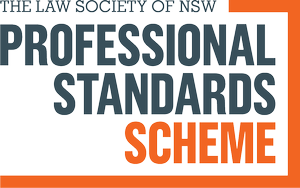What Is A Bridging Visa C (BVC)?
A Bridging visa C (BVC) Subclass 030 is a temporary visa granted when an application is lodged in Australia for a new substantive visa while not holding any substantive visa. It allows a person to remain lawfully in Australia while their new substantive visa application is being processed.
The BVC does not permit re-entry back to Australia after a person departs. It allows a person to remain lawfully in Australia until a decision is made on their substantive visa application.
As with other bridging visas, the BVC may come with certain conditions and restrictions that must be followed to maintain lawful status. These may include limitations on work rights, travel restrictions, or requirements to report to immigration authorities. It is important to note that any breach of these conditions can result in cancellation of the BVC and potential consequences for future visa applications.
Obtaining a BVC can be a complex and time-sensitive process, as the application must be made before the current visa expires. Working with a qualified immigration lawyer or registered migration agent can help ensure that the application is made correctly and that all necessary documentation is provided.
When To Apply A Bridging Visa C?
A Bridging visa C can be applied for, if:
- ● a person were granted a Bridging visa C (BVC) but has ended and they meet the requirements for another Bridging visa C.
- ● current BVC either does not allow work in Australia, or there are work restrictions, but there are compelling need to work (eg. financial hardship).
- ● a judicial review application was made after a merits review tribunal to uphold a decision to refuse visa
What Conditions Do Bridging Visa C Contain?
There is no discretion what conditions to impose on the grant of Bridging visa C. Unless it is for an application for Bridging visa C where there is a compelling need to work.
Visa conditions generally inherit the conditions of the last BVC held at the time the Bridging visa C was made, unless certain circumstances apply, for example:
- ● where a person made an application for protection visa and was refused, and they are appealing to courts, if the last visa had 8101 condition, then the current Bridging visa C will be granted with 8101 “no work” condition.
- ● where an applicant has made an application for ENS, RSMS, GSM, then ‘nil’ conditions apply.
When Will Bridging Visa C (BVC) Expire?
If the BVC was granted on or after 19 November 2016
The BVC will end:
35 calendar days after:
- ● a decision (either by the department or the Administrative Appeals Tribunal (AAT) in relation to the associated substantive visa application
- ● a determination that the application is invalid (either the substantive visa application or an application for review by the AAT)
- ● withdrawal of the application (either the substantive visa application or an application for review by the AAT).
28 calendar days after:
- ● a judicial review body upholds the decision to refuse substantive visa application,
- ● withdraw a related judicial review application.
If your BVC was granted before 19 November 2016
The BVC will end 28 days after the date that one of the following happens:
- ● the Department of Immigration notifies that substantive visa application is not valid
- ● the Department of Immigration notifies that substantive visa application has been refused
- ● the Department of Immigration notifies receipt of written request to withdraw substantive visa application
- ● a merits review tribunal notifies that it has upheld the Department of Immigration’s decision to refuse substantive visa application
- ● a merits review tribunal or a judicial review body receives written request to withdraw application for merits or judicial review
- ● a judicial review body upholds the decision to refuse substantive visa application
How Can We Help You?
If you are experiencing difficulties with your visa in Australia, you can contact our team by calling or emailing us.


